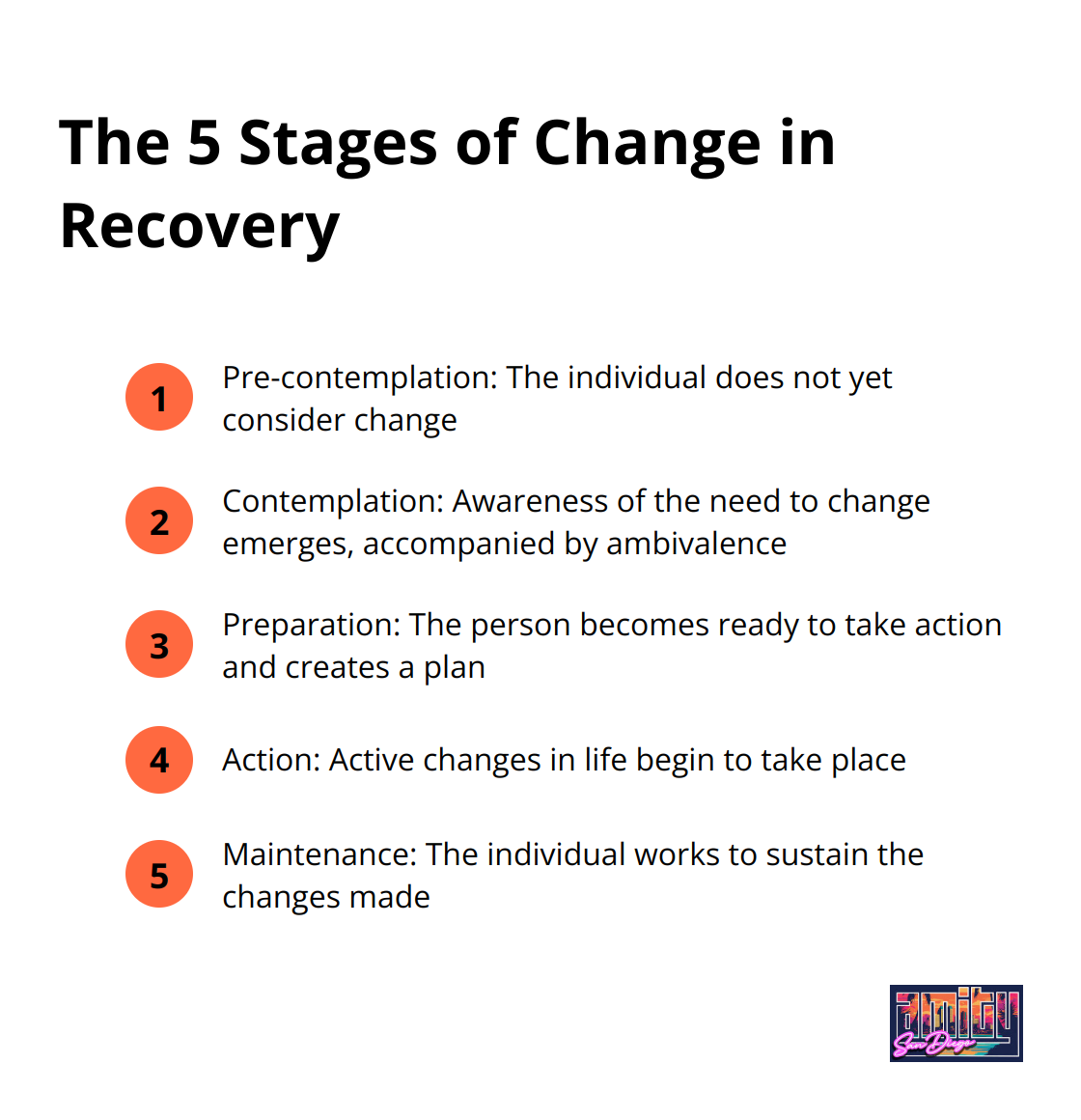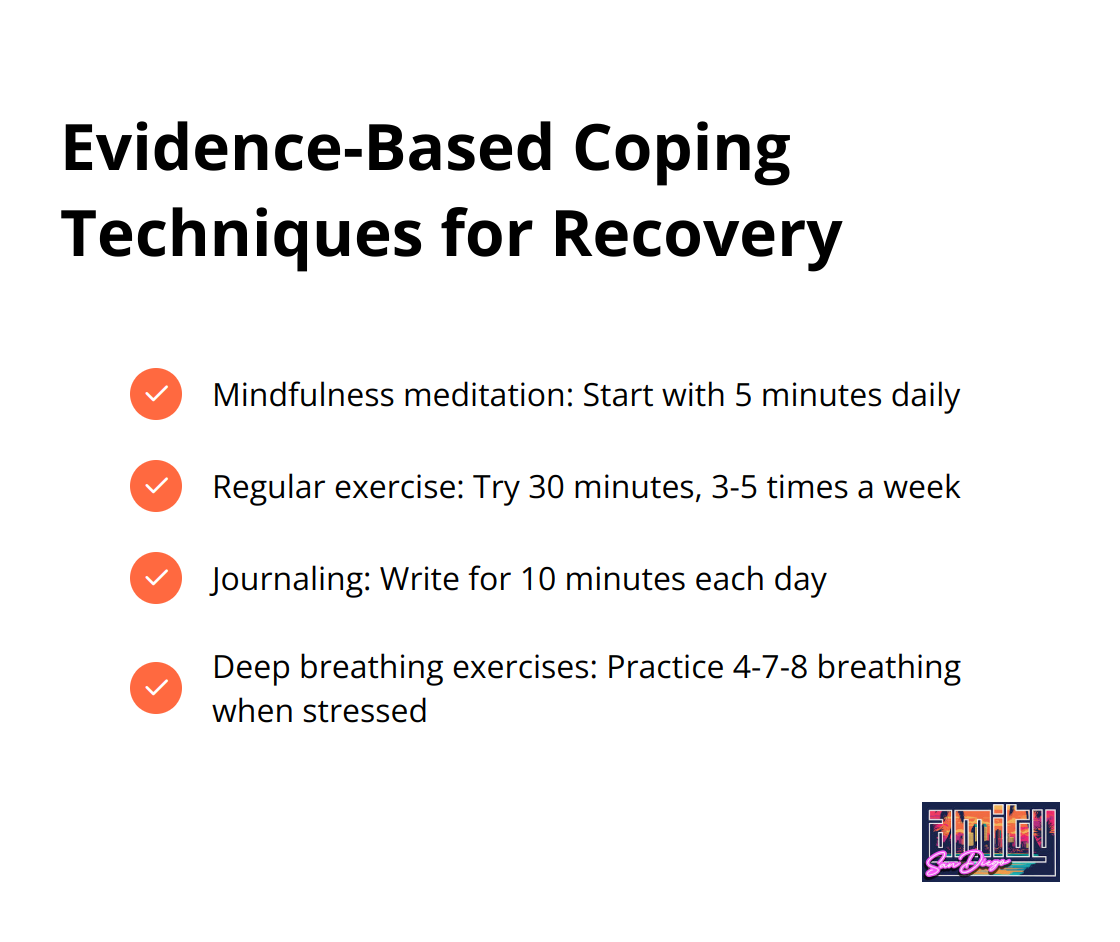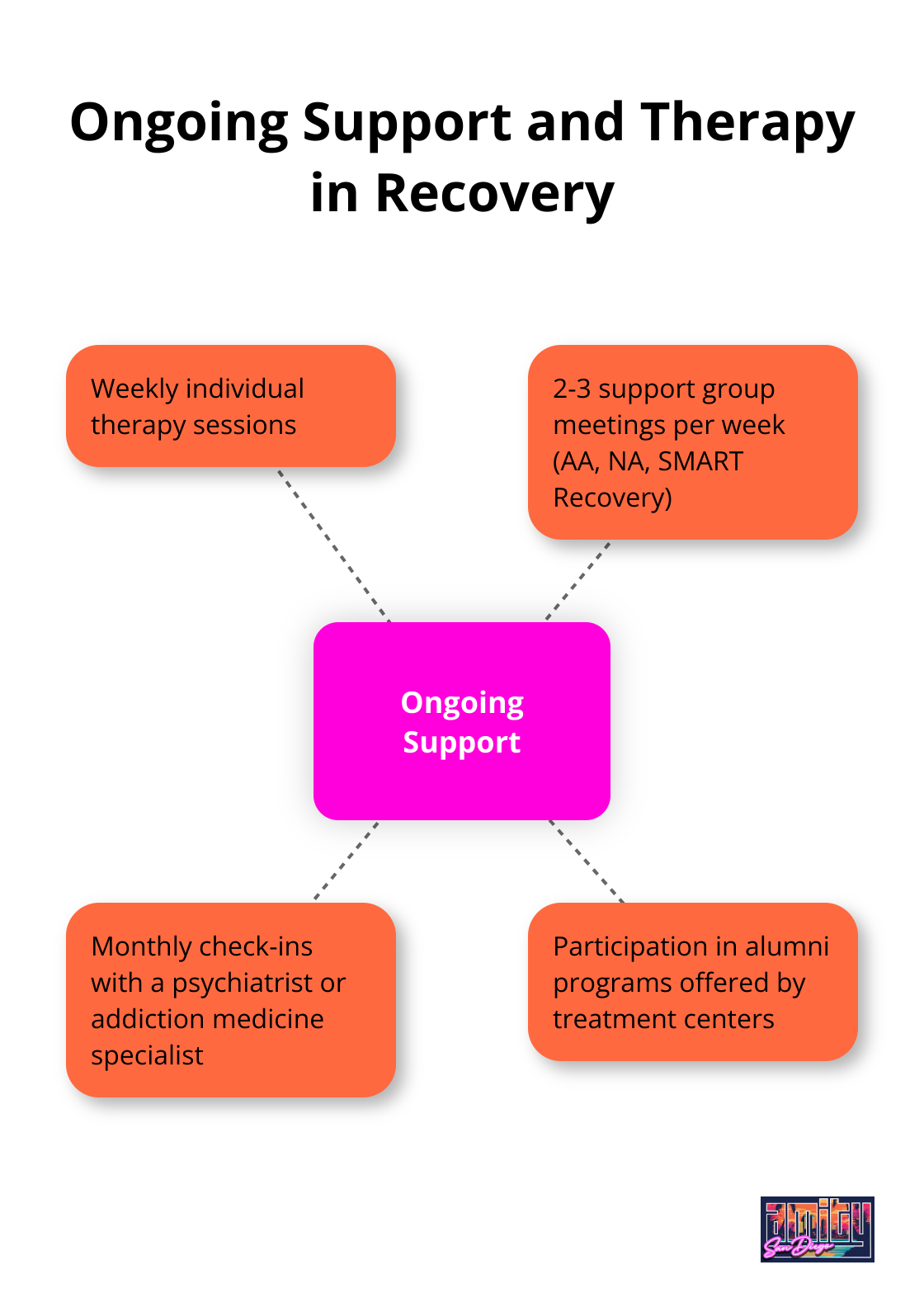At Amity San Diego, we understand that the recovery journey is a deeply personal and transformative process. Every individual’s path to sobriety is unique, filled with challenges and triumphs.
Our blog post aims to guide you through the essential steps of building a strong foundation for lasting recovery. We’ll explore strategies for maintaining long-term sobriety and provide practical tips to help you embrace a life free from addiction.
What Does Recovery Really Mean?
The Personal Nature of Recovery
Recovery transcends mere abstinence from substances. At its core, recovery represents a deeply personal journey of transformation. This process involves rebuilding one’s life and rediscovering oneself. Each individual’s path to sobriety unfolds uniquely, filled with its own set of challenges and triumphs.
Understanding the Stages of Change
The recovery journey often follows a series of stages, as identified by researchers Prochaska and DiClemente. These stages provide a framework for understanding one’s progress:

Recognition of these stages helps individuals locate themselves within their recovery journey and determine appropriate next steps.
The Importance of Individualized Treatment
No two recovery journeys mirror each other exactly. This reality underscores the necessity of tailored treatment plans. Research has shown that personalized treatment plans result in higher success rates and lower rates of relapse. Effective recovery programs assess each client’s unique needs, taking into account factors such as:
- Substance use history
- Co-occurring mental health conditions
- Personal goals and motivations
- Support system and environment
Based on these assessments, a personalized treatment plan emerges. This plan might incorporate a combination of therapy, medication-assisted treatment, and holistic approaches (tailored to the individual’s specific needs and preferences).
Embracing a Holistic Approach
Recovery extends beyond addressing substance use alone. It involves healing the whole person – mind, body, and spirit. This comprehensive approach might include:
- Addressing underlying trauma or mental health issues
- Improving physical health through nutrition and exercise
- Exploring spiritual or mindfulness practices
- Rebuilding relationships and social connections
Mind-body medicine, which includes interventions such as meditation, relaxation, yoga, acupuncture, and mindfulness, can play a crucial role in holistic addiction recovery.
As we move forward, let’s explore how to build a strong foundation for this transformative journey. The next chapter will delve into creating a supportive environment and developing healthy coping mechanisms – essential elements for sustained recovery.
Building Your Recovery Foundation
Surround Yourself with Support
Your social circle significantly impacts recovery success. A study found that social support can affect substance abuse relapse in residential treatment settings. Here’s how to build your support network:
- Identify supportive friends and family members
- Join local recovery groups or 12-step programs
- Consider sober living arrangements
- Engage with recovery-focused alumni programs
It’s acceptable to distance yourself from people who don’t support your recovery goals.
Develop Healthy Coping Strategies
Stress often triggers relapse. To combat this, try these evidence-based coping techniques:

Address Co-occurring Mental Health Issues
Many people struggling with addiction also face mental health challenges. Integrated treatment for co-occurring disorders can significantly improve recovery outcomes.
Key steps include:
- Get a comprehensive mental health assessment
- Work with a therapist experienced in dual diagnosis treatment
- Consider medication management if recommended
- Participate in support groups specific to your mental health needs
The Power of Professional Treatment
While self-help strategies provide value, professional treatment can be effective for drug dependence. Quality addiction treatment programs offer:
- Evidence-based therapies (CBT, DBT, EMDR)
- Medication-assisted treatment when appropriate
- Holistic approaches (yoga, nutrition counseling)
- Aftercare planning and support
Creating a Supportive Environment
Your physical surroundings play a vital role in recovery. Consider these steps to create a recovery-friendly space:
- Remove triggers from your home (e.g., alcohol, drug paraphernalia)
- Create a dedicated relaxation area (even if it’s just a corner of a room)
- Display positive affirmations or recovery-related artwork
- Keep a journal or gratitude list visible
A strong foundation sets the stage for long-term success. The next chapter will explore strategies to maintain sobriety and prevent relapse as you progress in your recovery journey.
How to Maintain Long-Term Sobriety
Create a Structured Daily Routine
A consistent daily routine boosts long-term sobriety. A study analyzed the habits and routines of adults in early recovery (>3 months) from substance use disorders. Here’s a sample routine:
6:00 AM: Wake up, practice gratitude6:30 AM: 30-minute exercise (walk, jog, or yoga)7:30 AM: Healthy breakfast and medication (if prescribed)9:00 AM: Work or productive activities12:00 PM: Lunch break with mindfulness practice1:00 PM: Continue work/activities5:00 PM: Attend support group meeting7:00 PM: Dinner and family time9:00 PM: Wind-down routine (reading, journaling)10:00 PM: Bedtime
Try to adjust this schedule to fit your lifestyle, but maintain consistency. Regular sleep patterns, meal times, and recovery-focused activities create stability that can prevent relapse.
Engage in Ongoing Support and Therapy
Continuous engagement with therapy and support groups is vital for maintaining sobriety. Residential options have emerged since the 1960s to help people with alcohol and drug addictions. We recommend:

A combination of professional therapy and peer support often provides the most comprehensive relapse prevention strategy.
Develop New Interests and Hobbies
Filling the void left by substance use is important for long-term recovery. Hobbies help establish a daily and weekly rhythm that supports stability and predictability, which is essential for maintaining long-term sobriety. Some popular options include:
- Creative pursuits (painting, writing, music)
- Physical activities (hiking, rock climbing, team sports)
- Volunteering in the community
- Learning a new language or skill
The key is to find activities that bring joy and a sense of accomplishment. These new interests not only occupy your time but also help rebuild self-esteem and create a sense of purpose.
Master Trigger Management
Identifying and managing triggers is essential for preventing relapse. Here’s a practical approach:
- Identify your top 5 triggers (e.g., certain people, places, emotions)
- Develop a specific plan for each trigger (e.g., calling a sponsor, using a coping skill)
- Practice trigger response strategies regularly, even when not feeling tempted
- Regularly reassess and update your trigger management plan
Maintaining long-term sobriety requires commitment and support. These strategies (when implemented consistently) can significantly increase your chances of sustained recovery and a fulfilling life free from addiction treatment San Diego.
Final Thoughts
The recovery journey transforms lives through dedication, perseverance, and support. We at Amity San Diego understand that each person’s path to sobriety differs. Our personalized treatment programs address individual needs with compassion and evidence-based approaches.
Professional help strengthens recovery. We offer a range of services to support you throughout your journey (including therapy, support groups, and relapse prevention strategies). Our experienced team stands ready to guide you towards a fulfilling life free from addiction.
Take the first step today. A life of sobriety awaits, filled with new possibilities and personal growth. Contact us to learn more about our addiction treatment programs in San Diego and start your recovery journey now.

